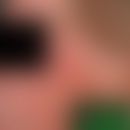Synonym(s)
HistoryThis section has been translated automatically.
Schwann 1838; Stout 1935
DefinitionThis section has been translated automatically.
Benign tumor of the nerve sheath made of Schwann cells, predominantly without axons. The most common are acoustic neuroma (47%) and spinal root neuroma (29%) followed by cutaneous neuroma (14%).
You might also be interested in
EtiopathogenesisThis section has been translated automatically.
Molecularly, (partial) losses of chromosome 22 are observed in all these tumors. In melanotic schwannoma, amplifications or deletions con 2p16 are detected in both familial and sporadic forms.
ManifestationThis section has been translated automatically.
The age peak of the first May station is between 10 and 40 years. In the ancient schwannoma, women are more frequently affected than men.
LocalizationThis section has been translated automatically.
ClinicThis section has been translated automatically.
Solitary, but also pearl-like arranged multiple nodules, mostly occurring in the course of a sensitive nerve, 1-4 cm in size, painful or insensitive, rough nodules. Usually located intradermally, expansion into the subcutaneous fatty tissue is possible. Segmental arrangement of neurinomas has been reported. Also palm-sized, hypertrichotic, rarely also hyperpigmented (pigmented schwannoma) flat tumours have been reported. Occasionally occurring in peripheral neurofibromatosis.
HistologyThis section has been translated automatically.
- Mostly sharply circumscribed dermal, more rarely subcutaneous lesion with a biphysical tissue pattern (mixture of Antoni A and Antoni B type tissue components).
- Type Antoni A is characterized by a polar, fibrous structure with closely spaced nuclear palisades separated by pale eosinophilic cytoplasmic bands (Verocay bodies). Type Antoni B shows a cell-poor, myxoid loosened tissue, with irregular arrangement of Schwann cells. Moderate variation in size of rod-shaped or even wavy nuclei.
- Immunohistology: S100-positive cells.
- Variants:
- Cellular schwannoma: storiform pattern with high cell density; Antoni A tissue; no Verocay bodies; rarely necrosis, frequently mitoses.
- Ancient schw annoma: schwannomas with marked degenerative changes such as hyalinization of vessels, hemorrhages, pseudocysts, calcifications, and bizarre giant cells. These degenerative changes must be differentiated against malignancy criteria.
- Myxoid schwannoma: Marked myxoid degeneration of the tumor stroma. V.a. acral occurrence.
- Plexiform schwannoma: Well demarcated, encapsulated tumor with predominance of Antoni's type A component.
- Microcystic/reticular schwannoma (rare variant, occurring subcutaneously and in the gastrointestinal tract).
-
Pigmented or melanotic schwannoma: Typical schwannoma (note: metastatic disease is rarely described) with polygonal or spindle-shaped, also epithelioid pigmented (melanotic) parts. Further subdivision into:
- psammatous (typical nerve sheath tumor in Carney syndrome)
- non-psammatous form (with and without calcopherites)
Differential diagnosisThis section has been translated automatically.
TherapyThis section has been translated automatically.
Progression/forecastThis section has been translated automatically.
Occurrence with neurofibromatosis is possible. Rarely malignant degeneration occurs.
LiteratureThis section has been translated automatically.
- Adani R et al (2014) Schwannomas of the upper extremity: analysis of 34 cases. Acta Neurochir (Vienna) 156:2325-2330.
- Altmeyer P (1979) Histology and clinic of cutaneous neurinomas. dermatologist 30: 586-589
- Claessens N et al (2003) Cutaneous psammomatous melanotic schwannoma: non-recurrence with surgical excision. At J Clin Dermatol 4: 799-802
- Leverkus M et al (2003) Multiple unilateral schwannomas: segmental neurofibromatosis type 2 or schwannomatosis? Br J Dermatol 148: 804-809
- Lisle A et al (2011) Cutaneous pseudoglandular schwannoma: a case report of an unusual histopathologic variant. At J Dermatopathol 33:e63-65.
- Manganoni AM et al (2009) Cutaneous epithelioid malignant schwannoma: review of the literature and case report. J Plast Reconstr Aesthet Surgery 62:e318-321.
- Maurer S et al (2016) Lumbar "ancient" schwannoma. Nude Dermatol 42: 139-144
- Wang ZX et al (2013) Segmental schwannomatosis in upper-extremity: 5 cases report and literature review. Beijing Da Xue Xue Bao 45: 698-703.
- Yuen T, Kaye AH (2004) Intracranial epithelioid schwannoma - a case report. J Clin Neurosci 11: 91-95
Incoming links (10)
Cutaneous sarcomas (overview); Dermatofibroma; Granular cell tumor; Neural tumors; Neurilemmoma; Neurinoma; Neurofibroma; Neurom, encapsulated; Neurothekeoma cellular; Spindle cell lipoma;Outgoing links (8)
Carney complex; Chromosome deletion; Excision; Neurofibroma; Neurofibroma plexiformes (encapsulated); Neurofibromatosis (overview); Neurofibromatosis peripheral; Neurom kutanes (overview);Disclaimer
Please ask your physician for a reliable diagnosis. This website is only meant as a reference.








